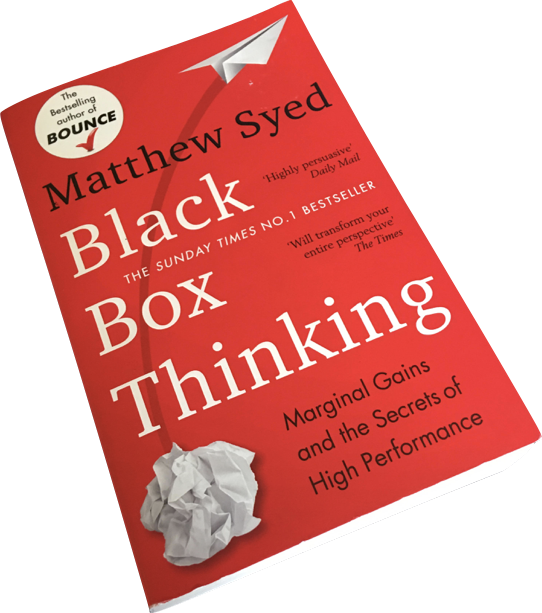Black Box Thinking
Black Box Thinking
Written by Sue Berry on 28th May 2019.0
2 min read
Syed M (2016) Black Box Thinking, John Murray, London
ISBN: 978-1-47361-380-5
Summary
 Using case studies, this book links action and in-action to performance and improvement. Matthew Syed explores how mistakes can lead to higher performance and new ways of working. But only if mistakes are embraced and used as a learning aid.
Using case studies, this book links action and in-action to performance and improvement. Matthew Syed explores how mistakes can lead to higher performance and new ways of working. But only if mistakes are embraced and used as a learning aid.
Evaluation
The book begins with the case study of a 37-year-old mother going into hospital for a routine sinus operation. Thing go wrong and unfortunately the patient suffers complications on the operating table. The anaesthetist and two other surgeons try to deal with the situation. The Senior Nurse advises them she has the equipment they need to perform a tracheotomy. They don’t respond, they continue with their current course of action. The patient died later with the doctors saying “Accidents sometimes happen. We don’t know why”. In truth, if the nurses had been listened to, the patient would have survived.
The book then explores the airline industry. Mistakes cost many lives in air disasters. As with the hospital example the pilot ignored the information provided by his co-pilot and other crew. He was fixated on his own course of action. The plane crashed.
This book is about how success happens. Airlines have a black box that they open following accidents. They learn from mistakes. Mistakes drive change.
Conclusion
The case studies read almost like fiction. This makes the book very readable. Many of the case studies will be familiar to the reader. It’s a useful book for anyone who is a manager. The clear message from the book is that if managers act, failure leads to innovation and improvement. In principle, the more failure the better the innovation. Failure leads to change, usually for the better. This is, of course, much easier to stomach when discussing development of a Dyson machines or David Beckham’s footballing prowess. It’s uncomfortable reading when learning from failure involves the loss of life.
Matthew Syed shows how opening up the ‘Black Box’, being willing to acknowledge and embrace failure, will lead to change. But he also explains why we find this difficult both personally and as an organisation.